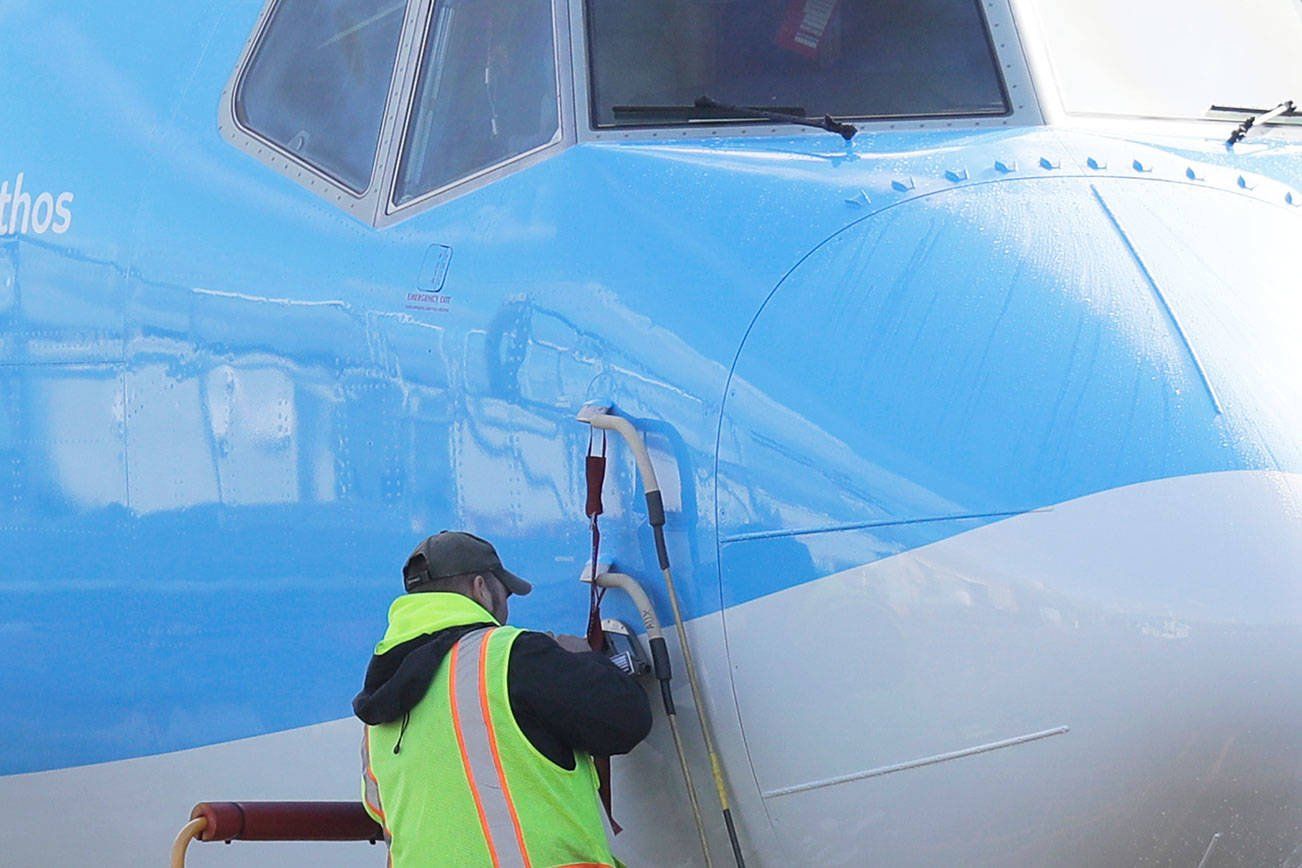
Test pilots on the Boeing 737 MAX weren’t provided key details on how the MCAS stability system functioned and apparently weren’t aware of its aggressive trim capability. The Wall Street Journal reports that MAX flight test pilots were also unaware that MCAS relied on data from a single angle-of-attack sensor.
The report follows a revelation earlier this week that Boeing misinformed Southwest Airlines about the operability of AoA sensor disagree lights that would have warned pilots about faulty AoA data. Boeing’s documentation said the 34 Southwest MAX aircraft had operable disagree lights, but Southwest learned after the Lion Air MAX crash last October that the lights operated only if PFDs were equipped with direct angle readouts, which Southwest aircraft didn’t have. The readouts were installed after the Lion Air crash.
Boeing admitted over the weekend that it waited 13 months to tell the FAA that making the AOA disagreement alert an extra-cost option was an unintentional error. It said it didn’t tell the FAA because the display didn’t affect safety. “Neither the angle of attack indicator nor the AOA Disagree alert are necessary for the safe operation of the airplane,” Boeing told Reuters.”They provide supplemental information only, and have never been considered safety features on commercial jet transport airplanes.”
The Journal reported that when MAX development began in 2011, the company sought and welcomed pilot suggestions on aircraft under development. But under restructuring and cost control, the previously independent flight test group lost influence in the developmental process. “About midway through the MAX’s development … a senior pilot recalls warning a Boeing executive about taking pilots out of the loop: ‘Something is going to get by, and it’s not going to be pretty,'” the paper reported.
The story follows a report by CNN earlier this week in which a former Boeing test pilot said, “Apparently, we missed the ramifications of the failure of that AoA probe.” But a senior Boeing executive told the paper he hadn’t heard about such concerns and that consolidation of the flight test group strengthened it by making more resources available throughout the company. He said restructuring added no additional cost pressure.
A test pilot who flew some late-stage MAX flights said he was informed about MCAS generally, but without details, and was unaware of its single AoA sensor architecture. MCAS—for Maneuvering Characteristics Augmentation System—is under intense scrutiny in both the Lion Air and Ethiopian Airlines hull losses, in which 346 people were killed.
MCAS was thought to have been added as a stall-protection subsystem. But in a press conference this week, Boeing CEO Dennis Muilenburg said it was actually installed as a stability augmentation system meant to improve control feel at light weights and extreme aft CG when the aircraft was being hand flown. In its original iteration, MCAS was capable of automatically rolling in nose-down stabilizer trim intermittently at the rate of 0.27 degrees per second. MCAS could apply full nose-down stabilizer trim.
Regardless of its purpose, MCAS relied on data from a single AoA sensor, although the airplane has two. Software revisions Boeing has developed for the MAX series will incorporate dual AoA data, plus error-detection filtering. It’s not known if trim limits will be restricted.
Boeing was criticized for not providing airlines and crews with any information on MCAS in Flight Crew Operations Manuals. Boeing deemed the system too minor to merit mention and believed it required no additional training.


































